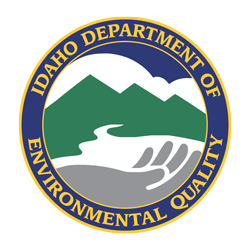The Air Quality Index (AQI) reports daily air quality information. It is calculated for five of the six major criteria air pollutants regulated by the federal Clean Air Act: ground-level ozone, particle pollution, carbon monoxide, sulfur dioxide, and nitrogen dioxide. EPA established national ambient air quality standards for each pollutant to protect public health.
The AQI is a national index and the value and colors are the same across the United States. The higher the AQI value, the greater the level of air pollution and health risk.
An AQI of 100 is the level set by EPA for each pollutant to protect public health. An AQI above 100 is considered unhealthy for certain sensitive groups. As AQI increases, air quality becomes unhealthy for the general public. For more information on AQI health precautions, visit our Air Quality Forecasts page and EPA’s AirNow pages.
| Daily AQI | Levels of Concern | Values of Index | Description of Air Quality |
|---|---|---|---|
| Green | Good | 0 to 50 | Air quality is satisfactory, and air pollution poses little or no risk. |
| Yellow | Moderate | 51 to 100 | Air quality is acceptable. However, there may be a risk for some people, particularly those who are unusually sensitive to air pollution. |
| Orange | Unhealthy for Sensitive Groups | 101 to 150 | Members of sensitive groups may experience health effects. The general public is less likely to be affected. |
| Red | Unhealthy | 151 to 200 | Some members of the general public may experience health effects; members of sensitive groups may experience more serious health effects. |
| Purple | Very Unhealthy | 201 to 300 | Health alert: The risk of health effects is increased for everyone. |
| Maroon | Hazardous | 301 and higher | Health warning of emergency conditions: everyone is more likely to be affected. |

